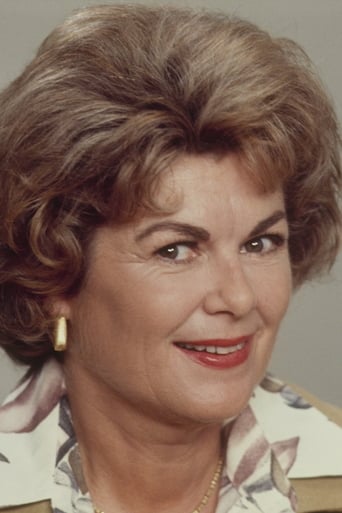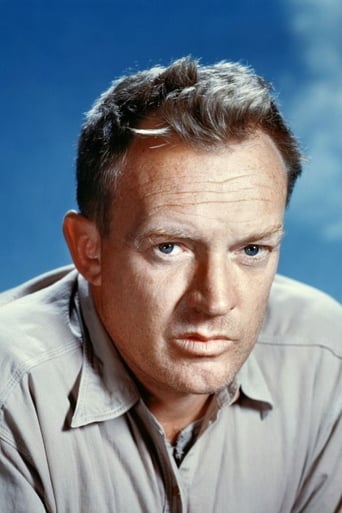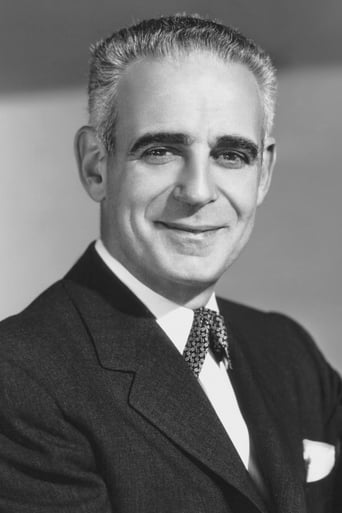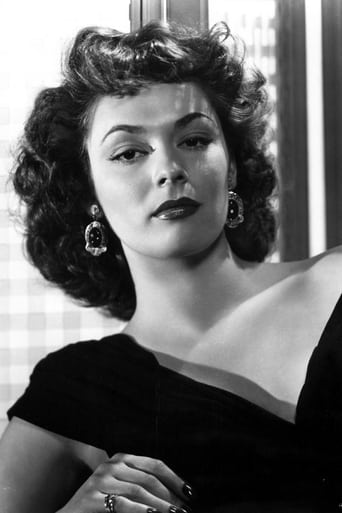Solemplex
To me, this movie is perfection.
Fluentiama
Perfect cast and a good story
StyleSk8r
At first rather annoying in its heavy emphasis on reenactments, this movie ultimately proves fascinating, simply because the complicated, highly dramatic tale it tells still almost defies belief.
Kinley
This movie feels like it was made purely to piss off people who want good shows
kijii
This is a surprisingly suspenseful thriller with a very good cast. The story takes place in a NYC walk up apartment building where a 9 year-old boy, Tommy Woodry (Bobby Driscoll), lives with his mom (Barbara Hale) and dad (Arthur Kennedy). Tommy's dad has to work nights. Since Tommy is always making up stories about himself and others, his parents are concerned about his false story-telling problem. Is this just a phase or should they get some kind of professional help for Tommy? One hot summer night, Tommy asks his mother if he can sleep on the fire escape to cool down while he sleeps. She agrees. However, during the night on the fire escape, Tommy witnesses what he believes to be a murder. He witnesses this though a thin opening in a window shade from the upstairs apartment. When Tommy tells his mother what he witnessed, she tells him that he was just dreaming and should go back to sleep. Concerned, his mother tells his father and he, too, is concerned after questioning Tommy's story. With no one believing his story, Tommy reports it to the police. Fearing that the upstairs neighbors—the Kellersons (Paul Steward and Ruth Roman)--will kill him, Tommy asks the police not to identify him as the person reporting the murder. So, when a police officer goes to the Kellerson's apartment, he poses as a building inspector to check any potential "crime scene" that may be real. He finds nothing that the Kellersons cannot explain and proceeds to assume that Tommy's story was JUST a story. However, the Kellersons now know that they have to get rid of Tommy before he talks too much. To do this, they send a telegram to Tommy's mother to visit her sick sister. This leaves Tommy alone the following night which, in turn, leads to a terrifying cat-and-mouse game between Tommy and the Kellersons.....
secondtake
The Window (1949)A totally classic film noir, fairly low budget, and unique for having a child at the middle of the story. The darkness of the mood and darkness of the filming combine to counterpoint the apparent cheer of this boy in New York City, creating something just short of a masterpiece. Perfect? I wish! But the best of it will blow your noir mind.The whole adventure here happens in an apartment building, one of those brick 5-story walk-ups with fire escapes on the outside. A boy, sleeping on the escape because of the heat, witnesses a murder. He tells his parents, who don't believe him (the movie opens with a summation of the Boy Who Cried Wolf). But of course, the murderer's believe him, and the boy is in danger.You might find this all a contrivance—and I guess it is, in a way, a plot too tight and compact for real life—but it works to create genuine suspense. The characters are all very realistic, from the nice, regular parents who want their kid to start telling the truth to the bad couple upstairs who seem on the surface to be rather like the parents. Even the cops are just regular schmoes. The dark stairway, the window nailed shut, the chases through an abandoned building next door (set up by the opening of the movie with a bunch of kids using it for play), and endless futile persuasion by the boy, who obviously means what he says all add up to for compact, intense ride. And filmed with energy and such dark shadows you can't see a thing. Director Ted Tetzlaff is more known as a cinematographer (including on his last film, "Notorious," which is a masterpiece). As a director this is probably his best film, and he knows how to make the cinematographers under him give him the visual richness the film in its simplicity requires. The plot carries the ideas, for sure, but the visuals carry the mood and intensity, and that's the best of it. And there's not a wasted minute—it's practically a textbook exercise in how to direct with economy, and the benefits of doing so.See it. The title doesn't inspire much—it should be called "Murder in the Window" or something more compelling—but the movie does indeed inspire much. See why. Oh, and a really clean copy is streamable from Warner Archive, which even has a free two week trial.
mgtbltp
The Window (1949) Director: Ted Tetzlaff (Notorious (director of photography) Writers: Mel Dinelli (screenplay), Cornell Woolrich (based on his story "The Boy Cried Murder") Cinematography by Robert De Grasse & William O. Steiner. Stars: Bobby Driscoll, Ruth Roman, Barbara Hale, Arthur Kennedy, and Paul Stewart. A unique Noir Thriller. A Family Noir. A Kid's Noir. But not just any kid, the kid who was a denizen of an decaying urban rat warren in a city that was constantly regenerating. A city before the Manhattan el's were torn down, before TV, before air-conditioning, where clothes were dried on clothes lines, where playgrounds were winding back alleys, tar beach roof tops, jungle jim fire escapes, and condemned buildings that became, clubhouses, forts or whatever you may imagine. The real habitats of urban man circa 1948, apartment - street, hall - alley, sidewalk - pavement, steel - earth, inside - outside, light - dark. What really hits home with this film is its realistic telling of the tale from Tommy's POV (Bobby Driscoll). Any viewer with an urban background will find some touchstones to his own childhood or to the childhood stories of his parents. I still remember trying to sleep on hot, humid summer nights, in a second story apartment, where, thanks to a corner bedroom and two open windows any slight cross breeze brought relief. But it also provided the city lullabies of traffic, distant and near, the rattle of the Connecting RR winding off the Hell Gate Bridge, the faint roar of the sunken Grand Central. Nature provided the rustle of a sycamore from a breeze or the patter of rain on it's leaves. My best friend who lived in a bigger apartment house actually did sleep out on the fire escape to cool off with an el down the block. The film begins brilliantly with one of Tommy's fantasies instantly drawing us in to his world. We see a condemned building, we see black window, lying face down, we see Tommy. He awakens looking somewhat in pain, clutching his chest. A child in distress. Crawling forward he grabs a cap gun and we are brought to reality. Tommy is fantasizing, playing/acting out, a "shot" cowboy crawling in a hayloft to the hay-door from where he spots the "gang" playing cards. He shoots and his older buddies ignore him, a new game has replaced the one Tommy was still playing, and a fire truck siren from the street trumps even that. As Tommy makes his way to his street urchin buddies we follow the relatively benign, maze like, cinematic urban landscape that duplicates in reverse a final reckoning that, taking place in the dead of night, turns it all very noir-ish and frightening, murderous silhouettes on window shades, illumination stabbed by slanting shadows. The city, especially in this film, is given equal billing. William O. Steiner (cinematography) a native New Yorker along with two of the three assistant directors, informs the visual compositions with a loving and knowing familiarity. Interiors (studio probably) Art Direction by Italian born Sam Corso, native New Yorker Albert S. D'Agostino and Kansian Walter E. Keller looks flawless. All performances are top notch. Bobby Driscoll was incredibly talented. He's thoroughly believable as Tommy. All his interactions and reactions with his peers, with his parents especially his father Ed (Arthur Kennedy), with his neighbors, and with the police, as he tries to convince them that he's telling the truth ring clear. Barbara Hale and Arthur Kennedy are excellent as Tommy's doubting parents ratcheting up the tension/horror level every time they attempt to reason with or placate Tommy's accusations with the kind of statements most parents faced with the same situation would make. They even make Tommy confront the upstairs neighbors the Kellerson's. Joe Kellerson and Jean Kellerson are one of the most despicable couples in noir. Their grift is for looker Jean (Ruth Roman) to lure single men to their apartment, probably for sex, where she slips them knockout drops, Joe (Paul Stewart) then rolls them for their doe and dumps them in an alley. On a hot & humid night Tommy can't sleep, he wakes his mother Mary Woodry, (Barbara Hale) and asks if he can sleep out on the fire escape where it would be cooler, she says sure but be careful. Laying out in the sweltering evening with his pillow Tommy sees the towels hanging from the Kellerson's clothesline billow in a breeze, a breeze that doesn't reach down enough to give Tommy relief, so like any resourceful kid, Tommy grabs his pillow and climbs up to the Kellerson's landing to fall asleep there. He's awakened both by a shaft of light spilling across his face from the space between the bottom of a pull shade and the window sill, and the sounds of a grift going murderously wrong. Its a beautifully filmed sequence where the action is obscured, partially silhouetted by the shade and vividly focused through the slot. Though I've never read the Cornell Woolrich short story I have read that the story is even gorier. Lots of great sequences, watch for the police station cat. The original music score by Roy Webb even includes a leitmotif for Tommy. Great New York Noir 10/10
offylover
I cannot understand how the upstairs neighbors could step on the boy's pillow (going up to roof and coming down) without noticing it and realizing someone was probably there when they committed the murder.Also, it was strange that boy's dad did not see the boy's runaway note at all, but the neighbor seemed to see it right away.All the actors seemed well-suited to their roles.If Bobby did all the stairway climbing himself (likely) he did it very well and with speed appropriate to the timing of the plot.Arthur Kennedy got many good roles over the years, but unfortunately never a signature role that could have propelled him to the top of his profession.




